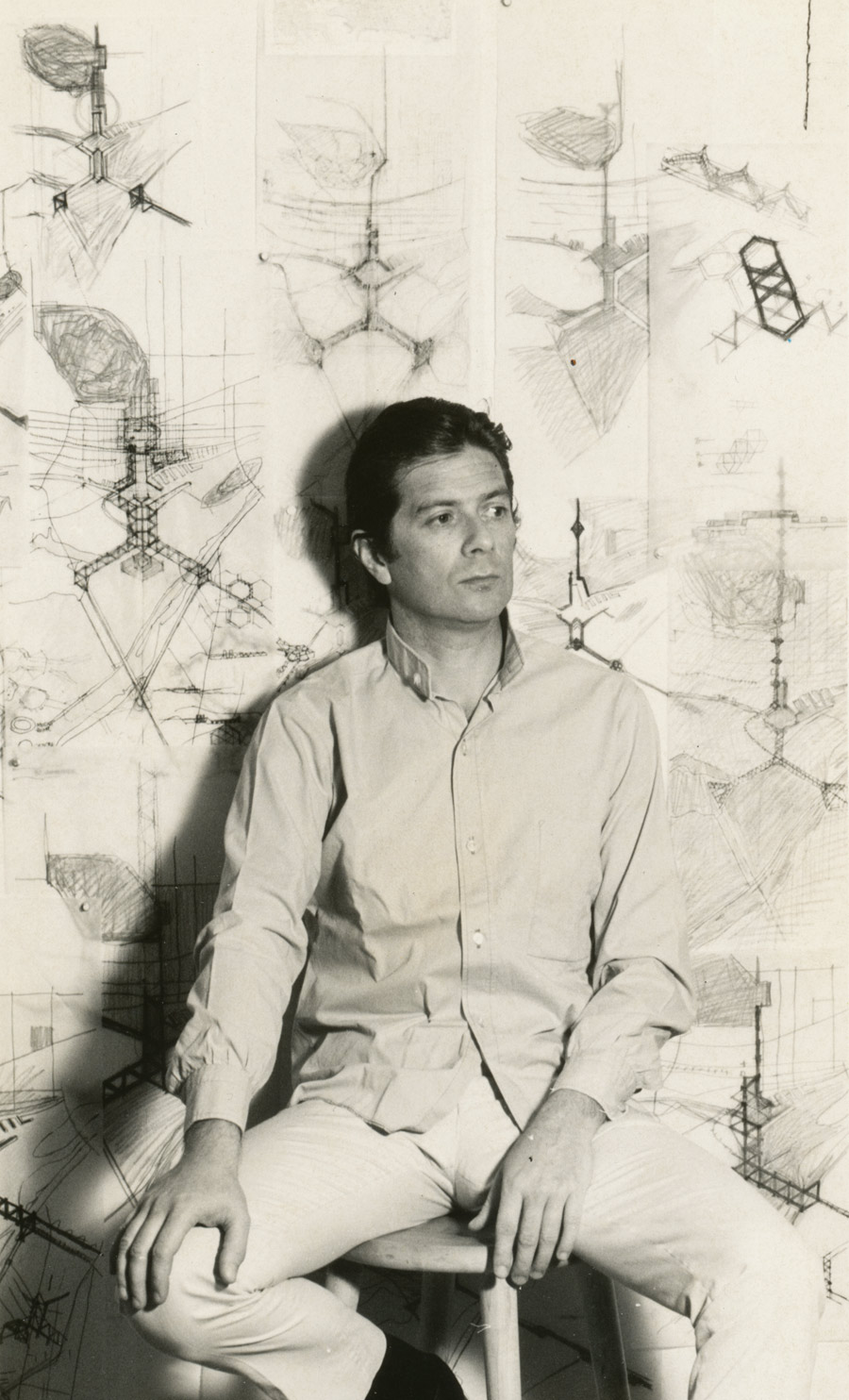-
uncube’s editors are Sophie Lovell (Art Director, Editor-in-Chief), Florian Heilmeyer, Rob Wilson and Fiona Shipwright; editorial assistance: George Kafka; graphic design: Lena Giovanazzi, graphic assistance Janar Siniloo.
uncube is based in Berlin and is published by BauNetz, Germany’s most-read online portal covering architecture in a thoughtful way since 1996.
Who is Zvi Hecker?
A painter, architect, superlative draftsman and stubbornly independent thinker, Zvi Hecker has spent the last 60 years using his talents to kick against clients, authorities and mainstream modernism.
From the geometrically modular spatial patterns he worked on with Alfred Neumann and Eldar Sharon in Israel at the beginning of his career, to the spiralling, zig-zagging, nature-inspired, symbolic structures of his later buildings, Hecker has remained throughout an uncompromising, rebellious and committed visionary, sometimes working on site himself to “alter” his designs in defiance of building regulations and even “the will of my clients”.
Let uncube take you to Zvi Hecker’s world: a place of sunflowers, crowbars and polyhedral perfectionism.
As guest contributing editor, uncube correspondent Gili Merin shot a stunning series of Hecker’s buildings in Israel especially for this issue as well as the cover portrait. Big thanks to her and to Zvi Hecker himself, Kristin Feireiss and Paolo Fontana who all made this issue possible.
Cover image: Gili Merin, 2016
-

Zvi Hecker, 1970. (All images courtesy Zvi Hecker unless otherwise stated)
Zvi Tadeusz Hecker
was born in Kraków, Poland in 1931 and survived the war years by fleeing with his family to Samarkand in Uzbekistan. In 1949, he returned to Kraków to study architecture before emigrating to Israel in 1950. He completed his architecture studies at the Technion Institute of Technology, Haifa in 1955 and studied painting at the Avni Institute of Art and Design, Tel Aviv until 1957.
In 1959, Hecker opened an architecture office in Tel Aviv with his former tutor Alfred Neumann and co-student Eldar Sharon. Their most important joint projects include the Bat Yam City Hall (1961-63), the military base Bahad 1 in the Negev Desert (1963-69), and laboratories for the Faculty of Mechanical Engineering in Haifa (1964-67). His own later works in Israel included the Ramot Polin housing project (1971-75) and the Spiral House (1984-89).
In 1991, after winning the competition to build the Heinz-Galinski School in Berlin (1991-95) and in the aftermath of the Gulf War, he moved and set up an office in the German capital. He subsequently realised the Palmach Museum of History in Tel Aviv (with Rafi Segal, 1993-98), the Jewish Cultural Centre in Duisburg (with Eyal Weizman, 1996-2000) and most recently finished the Queen Máxima Barracks at Schiphol Airport in the Netherlands (2001-16).
He lives and works in Berlin.
-
Search
-
FIND PRODUCTS
PRODUCT GROUP
- Building Materials
- Building Panels
- Building technology
- Façade
- Fittings
- Heating, Cooling, Ventilation
- Interior
- Roof
- Sanitary facilities
MANUFACTURER
- 3A Composites
- Alape
- Armstrong
- Caparol
- Eternit
- FSB
- Gira
- Hagemeister
- JUNG
- Kaldewei
- Lamberts
- Leicht
- Solarlux
- Steininger Designers
- Stiebel Eltron
- Velux
- Warema
- Wilkhahn
-
Follow Us
Tumblr
New and existing Tumblr users can connect with uncube and share our visual diary.
»Architecture starts when you carefully put two bricks together. There it begins.«
Ludwig Mies van der Rohe
Keyboard Shortcuts
- Supermenu
- Skip Articles
- Turn Pages
- Contents


